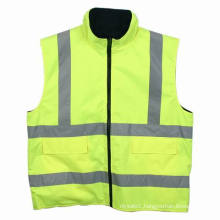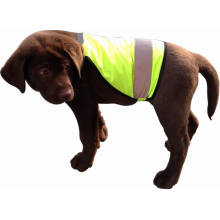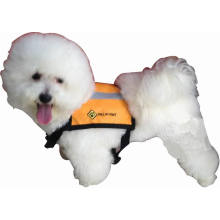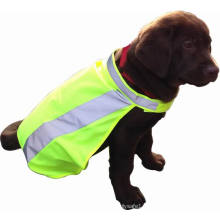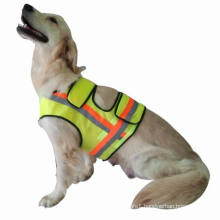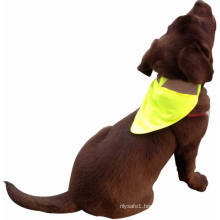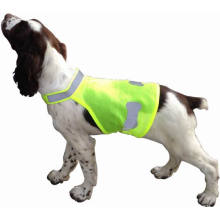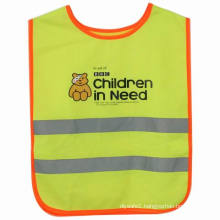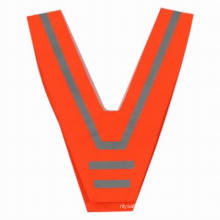Personal protective equipment and safety equipment work specification
2021-05-09
1 personal protective equipment
Unless otherwise specified, all staff (employees and contractors) should wear safety helmets, safety shoes (or safety boots) and protective goggles on all construction sites, production areas and construction sites .
Field Work Clothes

Conventional flame retardant protective work clothes
Workwear or trousers and long-sleeved shirts should be worn in all operating areas (factories, well sites, valve stations, and other site areas), warehouses, and construction sites. Wear short-sleeved shirts or work clothes is also permitted if there are no dangerous factors that could be harmful to the arms in the work area.
No loose, worn or strapped clothing should be worn in the work area.
Workers handling hazardous chemicals or materials must wear appropriate protective clothing as specified on the label or in the MSDS ( Material Safety Data Sheet ) . Clothes (including shoes) soaked in chemicals (including petroleum products) should be removed as soon as possible to prevent skin irritation and clothing on fire.
Footwear

safety shoes
When working in all operating areas (factory, wellsite, valve station, and other site), warehouse, and construction site, or whenever and wherever there is a possibility of foot injury, wear prescribed safety footwear. Or boots. Visitors (non-staff) can wear all-inclusive shoes, not necessarily guarding against paralysis, but they must be escorted by a special person and are only allowed to work in a safe area.
The shoes should always be kept in good condition. The shoes should not have or expose nails, snaps or any steel.
In all areas and places of the Northeast Sichuan Natural Gas Project, including the office area, high-heeled shoes and open-toe shoes are prohibited (the heel must be less than 50 mm , and the bottom area of the heel should be at least 900 mm 2 ).
The soles of the shoes should be kept in good condition, and worn soles should be replaced in time. If the sole is worn and you need to change shoes, discuss this with your supervisor.
helmet

German Schubert F300 Hard Hat
Work in all operating areas (factories, well sites, valve stations and other site areas), warehouses and construction sites, or when working in any area that may cause head injury, must wear safety in accordance with national standards, ANSI or EN standards. cap. Manufacturer's instructions and recommendations should be followed to wear a Safety Helmet. Do not wear metal or bamboo helmets.
The SAFETY HELMET should be worn properly and firmly when used. Do not bend it to one side or wear it. Do not wear any other hat in the helmet. A handkerchief can be placed inside the helmet to provide a more comfortable fit between the helmet and the head.
The life of the helmet is 30 months from the date of its production (see the date on the helmet). The straps of the helmet should be checked frequently and worn or damaged straps should be replaced in time. Be careful not to make any alterations to the helmet itself (drilling, nailing, or painting). The helmet can become fragile if exposed to sunlight or chemicals for long periods of time. The damaged helmet should be handled and replaced in a timely manner.
Eye and face protection

France RUIZ2 anti-chemical goggles
CDB employees and visitors should wear appropriate eye protection equipment before entering a place that may cause eye hazards. The most effective eye protection equipment should be selected according to the hazards that may be encountered in the work for different risk factors.
When working in all operating areas (plants, well sites, valve stations, and other site areas), warehouses, and construction sites, wear safety glasses with wings that meet ANSI , Z87, or EN166 standards. Wear protective goggles when entering or operating in areas where there is a potential eye hazard, such as when personnel are performing maintenance work inside buildings and offices.
Workers wearing corrective eyes must wear safety glasses or impact-resistant goggles on their corrective glasses, or wear a pair of sight-correcting goggles that are flanked by frames that are ANSI or EN compliant. Employees who need corrective lenses and are required to wear protective goggles can obtain eye-corrective goggles provided by Kawaguchi Tohoku.
Burners, cutting and arc welding operations, or wherever possible eye damage due to light or heat radiation, must be worn with a welder mask of the correct grade of dark lenses (handheld welder masks are prohibited). A welder's assistant must wear a protective device with the same degree of protection if he is in the welding industry. Dark safety glasses are not suitable for cutting or welding at any level. Cutting goggles are suitable for oxygen/acetylene welding or cutting if they are fitted with suitable dark lenses.
Specified level of protection
Welding/cutting type Light level
Oxygen cutting 4
Welding 5
Manual arc welding ( 60 - 160 ) 8
Manual arc welding ( 160 - 250 ) 10
Manual arc welding ( 250 - 550 ) 11
Gas Metal Arc Welding 10
Flux Cored Wire Arc Welding 10
Argon arc welding (gas shielded tungsten arc welding) (< 50 - 150 ) 8
Argon arc welding (gas shielded tungsten arc welding) (< 150 - 500 ) 10
Plasma arc welding ( 20 - 100 ) 8
Plasma arc welding ( 100 - 400 ) 10
Plasma arc welding ( 400 - 800 ) 11
Plasma arc welding (< 300 ) 8
Plasma arc welding ( 300 - 400 ) 9
Plasma arc welding ( 400 - 800 ) 10
Hearing protection measures
All personnel working in work areas with noise levels above 85 decibels ( dBA ) must be equipped with hearing protection equipment.
Employees who need to enter the area occasionally for their daily work should carry the hearing protector at all times.
If conditions permit, disposable earplugs should be provided near the entrance to the area where the noise level exceeds 85 dB for each person entering the area.
gloves

Duty gloves
The palm and fingers are the most vulnerable parts of the body. Therefore, it is very important to wear suitable gloves to avoid injuries to the palm/finger during the operation.
The type of gloves should be selected to best protect the hands from dangerous work hazards, while also ensuring the flexibility of the hands during the operation. Should first determine the dangers that may be encountered, and then select the appropriate type of gloves.
Leather gloves are heat-resistant, fireproof, sharp and rough objects, and can provide a cushioning effect on impact. Maintenance workers and assemblers often wear such gloves during heavy work. Wear leather gloves when handling shelves, wood, wires, high temperature equipment, high temperature sample reservoirs, and/or drums. The use of palm-swept gloves is not recommended when dealing with hydrocarbons and other liquids, as such gloves can only provide minimal protection in such situations.
Chemical protective gloves (neoprene, polyvinyl chloride and nitrile) should be used to treat hydrocarbons and corrosive chemicals such as acids and caustic. The gloves selected must be able to withstand the damage of the material to be treated. If splashing may occur during work, long-barreled gloves should be used. The length of the gloves should exceed the length of the cuffs to protect the wrist and forearm.
Cotton gloves are dirt and wear resistant and can handle the roughest materials. However, the thickness and firmness of cotton gloves are insufficient to handle sharp objects.
The users of LATEX GLOVES include medical staff in clinics and hospitals, or emergency personnel. Latex gloves cannot be used in environments with oil and grease.
The welder's gloves are made of treated leather that protects against heat, welding sparks, splashes and slag.
Electrician gloves protect against electric shock caused by accidental contact with energized electrical equipment. Electrician gloves are actually composed of two sets of gloves, one is the inner layer of rubber gloves and the other is the outer layer of leather gloves.
Body protection
In order to protect the body from acid, corrosive, oily substances and dirt, dust, welding sparks and slag, or high temperature damage, employees must wear appropriate body protection equipment. What kind of protective measures should be taken depends on the nature of the harmful substances.
Air-tight work clothes, such as rain-proof clothing and acid-proof clothing, can be splash-proof and must be worn if they are exposed to acidic or corrosive materials or hydrocarbon liquids. This type of gas-tight workwear should be worn when piping and machinery are opened, and corrosive or splashing or spraying of hydrocarbon materials may occur during operation.
Employees should wear airtight work clothes in a wet environment, that is, when they are exposed to corrosive repairs, or when cleaning liquids in oil tanks.
Remove frayed or damaged work clothing immediately and replace it with new work clothes.
The role of disposable one-piece coveralls is to protect workers from dust and dry materials. For liquids and oils, such work clothes provide minimal protection.
One-time work is taken while sweeping, tank cleaning, and dumping of designated dry materials.
Employees should wear aprons when pouring liquids, dumping dry materials, or operating unclean machines to prevent dirt and raw materials from soiling the work clothes. Airtight aprons (made of polyvinyl chloride) provide effective protection against the splashing of oils, solvents, grease, and contaminants.
Welders should wear the correct protective clothing (short coat and trousers or welder apron) according to the type of job. The protective clothing of the welder should be made of leather, fire-retardant thick cotton and other materials. It can protect employees from slag and welding sparks during gas welding and welding operations.
Protective mask breathing apparatus

Full Face Mask gas mask
When working in a dusty environment and when chemicals are present in the work area, or when painting, sandblasting, etc. are in progress, employees must be equipped with appropriate respiratory protective equipment. Before using the protective mask, you must first perform a physical examination and face mask seal inspection.
When using a negative pressure respirator , it is important to select the correct canister or filter to protect against harmful substances. It should be noted that the dust mask can only be used for dust particles, but it can't defend against harmful chemicals. Therefore, you can't replace the respirator with a dust mask at any time.
When using a protective mask, there must not be any obstacles such as beards, facial deformities, or glasses that interfere with a good seal between the respirator seal and the face. Employees who require protective masks in their operations must scrape off hair or beard in the area of the face seal.
If you must go into a toxic or dense smoke environment or work in any oxygen deficient environment, use a self- contained air breathing apparatus ( SCBA ). The SCBA respirator is for use only by trained professionals.
Whenever the SCBA type respirator is used, it must require the cooperation and support of at least one other employee (ie two-person peer-to-peer "partner system"). The “partners” should be on standby outside the work area and carry a second set of breathing apparatus with them for rescue at any time.
2 miniature escape breathing apparatus
All employees who need to enter an environment where hydrogen sulfide ( H2S ) is present or may be present must wear miniature escape ventilators and must be fully trained to learn how to use such respirator before entering.
Mini escape breathing apparatus can only be used for escape purposes and cannot be used for rescue or any other purpose.
3 Fall prevention measures

GRS Fire Class III Safety Sling
When an employee works at an unguarded place (such as an oil tank, production vessel, or unprotected work platform, or other elevated structure or structure) at a distance of 1.8 meters ( 6 feet ) or more from the surface or countertop , must conform to ANSI based on standard EN or body harness (legs and back D-ring), through which a shock absorbing lanyard belt and the carrying capacity of 2200 kg (5000 lbs) is connected to a fixed anchor. The anchor point should be located as high as possible above the worker to minimize the fall distance.
Fall protection devices should be readily available. Before wearing fall arrest equipment, staff should be trained to learn how to properly use such equipment (how to wear it, how to maintain it, and how to choose the right anchor).
If the lanyard needs to be unlocked at any time during the operation at a high place, the supervisor should discuss the relevant risk assessment and work plan problems so as to ensure the lanyard 100 ? In order to minimize the risk in employee operations, it may be necessary to use double lanyards or other solutions.
Access to confined space may also need to take appropriate measures to drop. For example, when entering a tower or tank where horizontal baffles have been removed, employees must use full-body seat belts when entering dangerous confined spaces.
Fall prevention devices should be carefully inspected before each use. Fall arrest devices that are exposed to oil/chemical contamination, erosion, or any signs of wear or damage should be destroyed or scrapped. Falling restraint devices (such as seatbelts and lanyards), which are impacted in a fall, must be destroyed and replaced with new ones, whether or not the device looks intact.
In working areas where fall protection equipment is used, lifesaving equipment should also be readily available .
Wear orange or yellow reflective vests when there are vehicles in the employee's work area, or when employees work near heavy equipment. The fire ombudsman (seeing fireman) required for high temperature operations, the safety inspector required to enter the enclosed space, and the instructor during the lifting operation should wear this High Visibility Vest.
Not all workers should wear reflective vests. Workers should not wear high-intensity reflective vests unless there are various situations mentioned above, so as not to cause confusion between posts.
5 eyewash station and emergency shower head
All forms of eye protection must be equipped with some form of eye protection depending on the degree and type of risk.
Where staff may be exposed to harmful chemicals (chemicals that may cause direct or permanent injury or have a detrimental effect on physical function upon exposure), emergency showers and eyewash facilities should be installed for employees to quickly rinse or flush Dripping and other emergency treatment. When employees are exposed to harmful chemicals. It should last at least 15 minutes.
In areas with low levels of damaging chemicals/corrosive chemicals, if there are other water sources available for flushing, fixed drinking water pipelines or mobile 60 liters eyewash can be installed instead of emergency showers and eyewash facilities.
Eyewash bottles may be used in areas where non-traumatic chemicals are used.
The water for the emergency shower/eyewash facility must be and can only be drinking water. In order to prevent the water temperature from overheating, all above-ground water lines must be insulated and painted with a reflective color. A warm water shower/eyewash facility should be installed and the water temperature should be maintained between 18 degrees Celsius ( 65 degrees Fahrenheit ) and 30 degrees Celsius ( 85 degrees Fahrenheit ).
Fixed-pipe eyewash facilities and emergency showers should be washed and cleaned weekly. The water for the mobile 60 liters eyewash should contain the appropriate amount of bactericide and should be changed once per 6 months (as per the earliest implementation) according to the manufacturer's instructions . Replace expired sealed eyewash bottles promptly.
6 safety signs
The safety sign is very important. Its function is to remind and warn the environment or situation that may cause injury, illness or accident, and provide safety instructions and instructions. Safety signs transmit information visually based on their different shapes and colors. The text on the sign should be in front of the Chinese language, and the text on the sign should stand out. Safety signs must comply with the requirements and regulations of the Chinese national standard GB2894-1996 .
This article is from Citroen, which was reorganized and edited by China Rescue Equipment Network.FR Coverall is a protective garment that is worn during work and produce. The style of structure, color configuration and material selection of the FR Coverall are designed for the purpose of safety first, which is the functional difference between the work FR Coverall and other garments. Furthermore, in the design of labor protection FR Coverall,FR Jackets,FR Shirts,FR Pants. Which safety and protection functions are the first. On this basis, the rationality and comfort of the FR Suit shape should be considered, so that the binding force of the FR Coverall to the human body is reduced to a minimum, thereby improving the work effectiveness.
Fr Coveralls, Fireproof Coverall, Workwear Coverall, Safety Coverall
Zhejiang Shunfa Reflective Clothing Co., Ltd. http://www.coverallsuits.com
